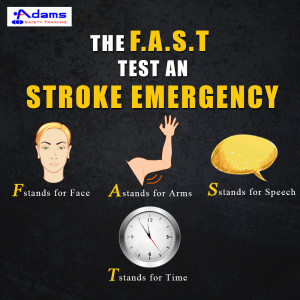Nearly 800,000 people in the U.S. experience stroke every year, which means one stroke occurs every 40 seconds. A stroke is an acute neurological injury that occurs when the blood supply to the brain is interrupted, due to blood clot (ischemic) or there is bleeding in the brain (hemorrhagic). Stroke is also called ‘Cerebrovascular Accident.’ Due to interruption in blood supply, brain cells begin to die within minutes. So the victim requires emergency care at the first sign of a stroke. First responders need to act ‘FAST’ in case of stroke emergency.
Understanding the F.A.S.T Test
• F stands for Face: As a first responder, you need to check the face of the stroke patient. Do you notice any sign of facial weakness? Has their mouth fallen on one side?
• A stands for Arms: Check whether the victim can lift his or her both arms? A stroke patient cannot raise his/her arm fully.
• S stands for Speech: A stroke victim faces difficulty in understanding and producing speech. If you notice the victim’s speech is slurred and he/she is not able to understand your voice, then it can be a stroke emergency.
• T stands for Time: If you see any of these signs immediately call emergency services or take the patient to the hospital.

Early treatment saves many lives and reduces the effects of stroke. By learning the FAST test during CPR training, you could recognize the symptoms of stroke and save someone’s life!

